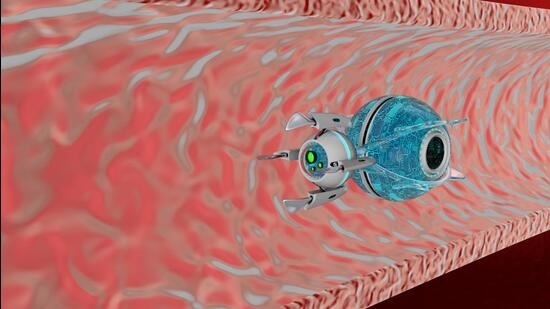Scientifically Speaking: Fruit flies become ‘living robots’
The Harvard team has harnessed behaviours that are so reliable they make animals act as robots while still maintaining their biological functions.
When a fruit fly buzzes across your kitchen, you probably don’t see a sophisticated robot. But to researchers at Harvard University’s Rowland Institute, this tiny insect represents the future of microrobotics.

In a study published this month in the Proceedings of the National Academy of Sciences, researchers led by Aleksandr Rayshubskiy demonstrated that the common fruit fly (Drosophila melanogaster) can be controlled as a “living microrobot” with no motors, electronics, or batteries required.
Building useful robots at microscale has always been challenging. Motors are fragile, batteries don’t last, and fitting in enough computing power for navigation is nearly impossible. Instead of struggling with these limitations, the Harvard team asked: what if we utilised something evolution had already been perfected?
“Nature provides efficient solutions to complex challenges,” the researchers explained in their paper. “Fruit flies navigate their environment with remarkable agility and can have their behaviour precisely controlled through genetic manipulation—all within a 1 mg, 2.5 mm body.”
The researchers developed two ingenious methods to guide the flies. The first used a visual approach, projecting a rotating black-and-blue pinwheel pattern centered on the fly. When the pinwheel rotated clockwise, the fly turned right. Counterclockwise rotation triggered a left turn. This elegant solution tapped into the fly’s natural optomotor response, a reflexive behaviour where flies adjust movement to stabilise their visual field.
The second method used light to hack the fly’s sense of smell. The researchers genetically engineered flies to express light-sensitive proteins in their antenna, then painted each antenna with different pigments: one that passed red light but not blue, and another that passes blue light but not red. Red light activated the right antenna, triggering a right turn, whereas blue light activated the left antenna, triggering a left turn.
Both approaches were used successfully. Flies followed visual guidance commands 94 percent of the time, while the smell-guided method initially achieved about 80 percent accuracy. The team further improved this by activating specific neurons in the mushroom body, a brain region involved in olfactory learning, boosting responsiveness to nearly match the visual method’s accuracy.
What’s particularly impressive was what these micro-aviators accomplished under guidance. Some carried loads up to 1.1 milligrams or roughly equal to their own body weight while maintaining the ability to follow steering commands. A few transported these payloads across distances reaching 500 metres, equivalent to approximately 200,000 times their body length. For perspective, that would be like a human carrying their body weight across 340 kilometres!
The flies weren’t just couriers. Under visual control, they became artists. By guiding flies along predetermined trajectories, researchers had them trace patterns spelling out “HELLO WORLD.” Each letter took about 17 minutes to complete. The team also demonstrated coordination of multiple flies simultaneously, with each acting as a separate “pen” writing different letters.
In another experiment, flies were repeatedly guided toward a 10-milligram ball or about ten times their weight. Despite receiving no reward and having no inherent interest in the ball, the flies reliably pushed it across significant distances when directed to interact with it, achieving median displacements of 49 centimetres.
This approach represents a middle ground between two existing strategies in microrobotics. Previous attempts have either focused on building tiny mechanical robots that mimic animal behaviour or converting living creatures into “cyborgs” by attaching control devices that shut off most of their natural functions. Both approaches have significant limitations.
The Harvard team has harnessed behaviours that are so reliable they make animals act as robots while still maintaining their biological functions.
It’s important to note, however, that these fruit flies aren’t robots. None of the experiments reached 100 percent accuracy, and the flies occasionally went their own way despite guidance cues. When multiple flies were being directed simultaneously, they tended to wander off course more often when near another fly, suggesting they could prioritise one stimulus over another when faced with competing signals.
The research opens exciting possibilities for applications scientists have long envisioned for controllable insects, including environmental monitoring, precision agriculture, pollination assistance, disaster response, and search-and-rescue in collapsed buildings. Future work might equip flies with lightweight “backpacks” containing miniature sensors or electronics to enable autonomous guidance outside laboratory settings.
As researchers continue pushing the boundaries of robotics and bioengineering, this approach reminds us that sometimes the most ingenious solutions have been buzzing around us all along.
Anirban Mahapatra is a scientist and author, most recently of the popular science book, When the Drugs Don’t Work: The Hidden Pandemic That Could End Medicine. The views expressed are personal.
All Access.
One Subscription.
Get 360° coverage—from daily headlines
to 100 year archives.



HT App & Website







